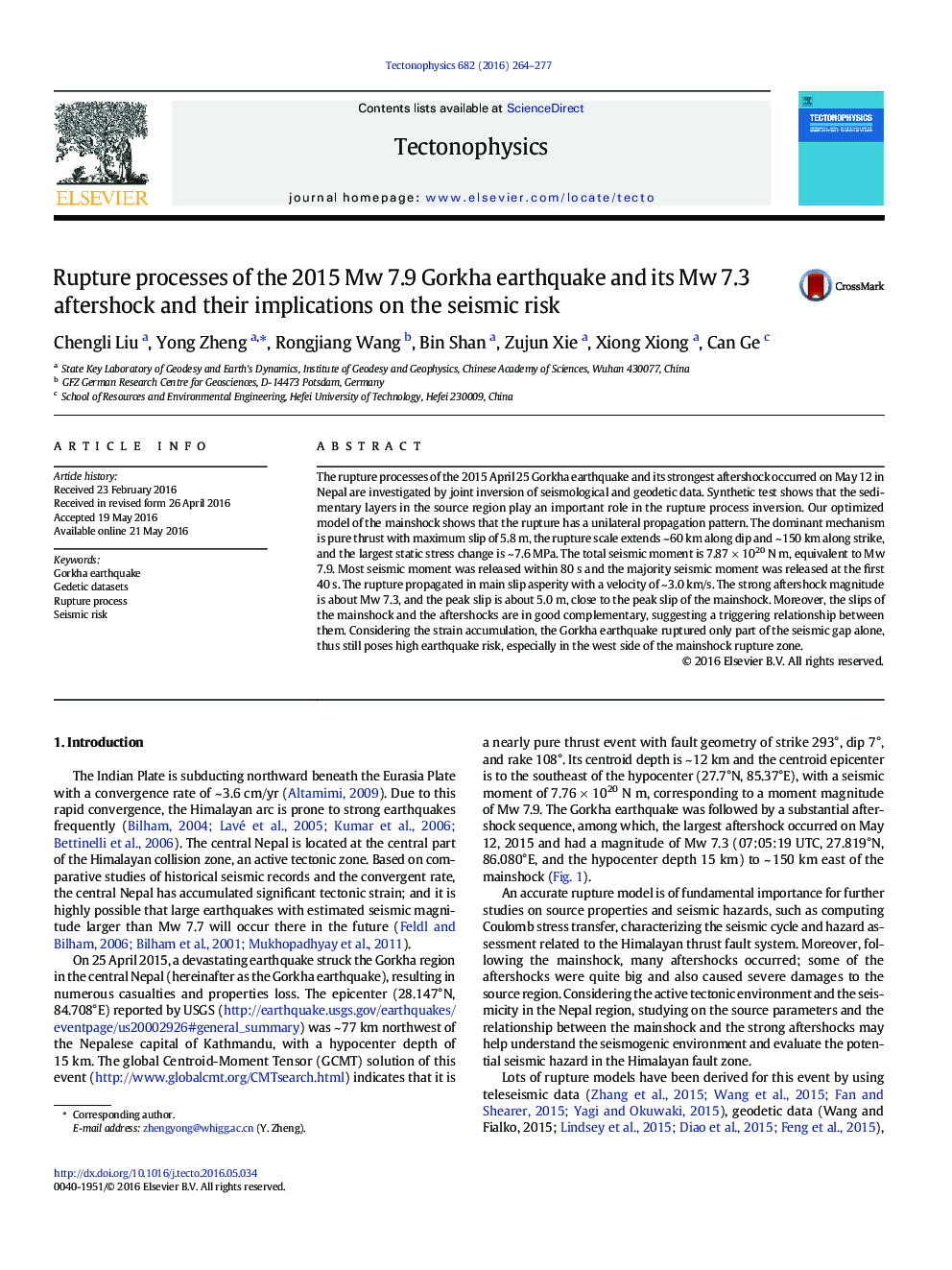| Article ID | Journal | Published Year | Pages | File Type |
|---|---|---|---|---|
| 4691317 | Tectonophysics | 2016 | 14 Pages |
•The mainshock and the aftershocks are in good complementary, suggesting a triggering relationship between them.•Sedimentary layers in the source region play an important role in the rupture process inversion.•The surroundings of the mainshock and the strongest aftershock still pose high potential of seismicity.
The rupture processes of the 2015 April 25 Gorkha earthquake and its strongest aftershock occurred on May 12 in Nepal are investigated by joint inversion of seismological and geodetic data. Synthetic test shows that the sedimentary layers in the source region play an important role in the rupture process inversion. Our optimized model of the mainshock shows that the rupture has a unilateral propagation pattern. The dominant mechanism is pure thrust with maximum slip of 5.8 m, the rupture scale extends ~ 60 km along dip and ~ 150 km along strike, and the largest static stress change is ~ 7.6 MPa. The total seismic moment is 7.87 × 1020 N m, equivalent to Mw 7.9. Most seismic moment was released within 80 s and the majority seismic moment was released at the first 40 s. The rupture propagated in main slip asperity with a velocity of ~ 3.0 km/s. The strong aftershock magnitude is about Mw 7.3, and the peak slip is about 5.0 m, close to the peak slip of the mainshock. Moreover, the slips of the mainshock and the aftershocks are in good complementary, suggesting a triggering relationship between them. Considering the strain accumulation, the Gorkha earthquake ruptured only part of the seismic gap alone, thus still poses high earthquake risk, especially in the west side of the mainshock rupture zone.
